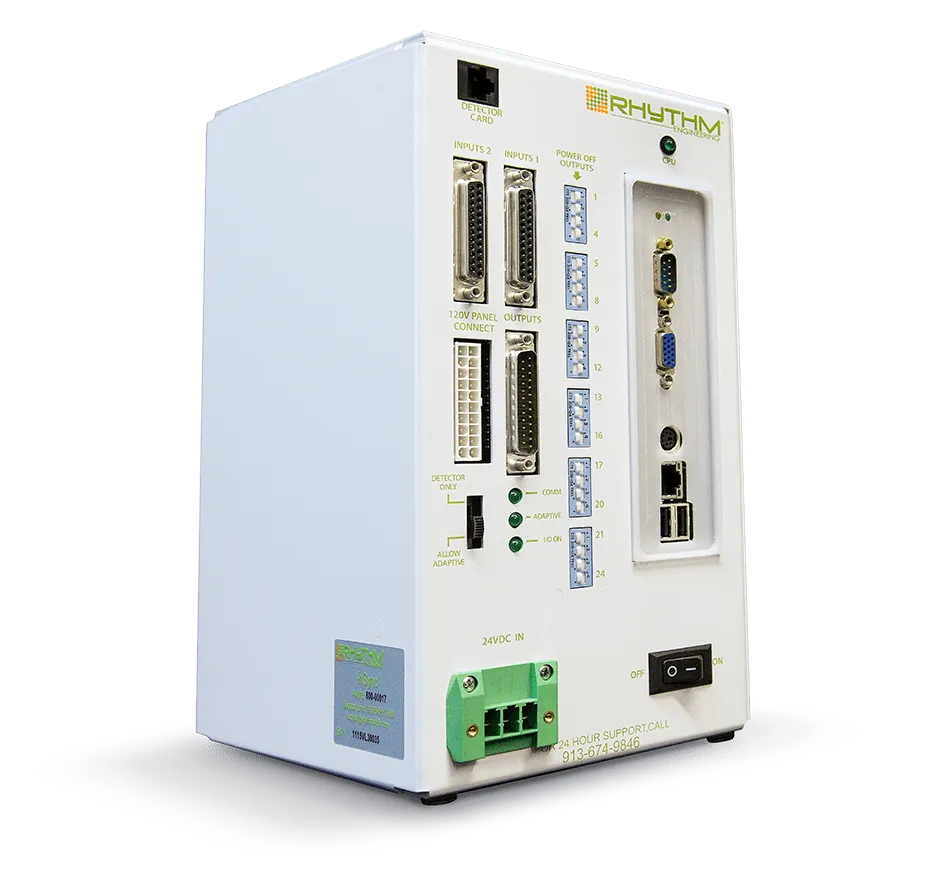
The Only Real-Time Adaptive Traffic Signal System
Next-Gen Traffic Signal Automation
In|Sync is a next-generation adaptive signal system allowing traffic professionals to automatе their signals in real-time. Every day, 54,000,000 motorists throughout North America enjoy the benefits of In|Sync.
Redefine Your City’s Traffic Flow
About 80% of the traffic signals in the United States are uncoordinated.
Traffic delay, congestion, stops at traffic signals — all result in citizen complaints.
In|Sync solves the three main problems:

Outdated Technology
The manual data collection process is inaccurate and ineffective. Timing plans are created using the outdated 50-year-old Webster model.
AI-Powered Technology
In|Sync is the only truly adaptive traffic signal system. It digitizes traffic signal operations using the patented Greedy Algorithm.

NOT ENOUGH TIME
With the current way of timing traffic signals, it takes over two months to synchronize an arterial and the process is not scalable.
Real-Time Coordination
In|Sync lessens your workload by computing real-time green durations to vehicle demand at each local intersection.

Lack of Resources
The current ways of coordinating traffic signals are manual and resource-intensive and are, thus, often not funded.
Cost-Effective Solution
Compatible with all existing hardware, In|Sync enhances efficiency and reduces the cost of traffic signal synchronization.

What Is In|Sync?
More than an Adaptive Traffic Signal System.
In|Sync is a traffic bot. With a keen sense of vision and a powerful brain, In|Sync processes real-time data. It functions in varying environmental conditions and is compatible with legacy hardware. In|Sync adapts to changing traffic flow and automatically synchronizes your traffic signals.
Download Catalog
How Does It Work?
More green lights to motorists through automation.
In|Sync is the only true, real-time adaptive system that bases decisions on actual demand and delay of individual movements. It uses top-class Artificial Intelligence to detect and quantify vehicle presence. In|Sync produces 30%-40% better results than other legacy systems by eliminating analog over digital control.

What Makes In|Sync Different?
In|Sync is a next-generation adaptive signal system allowing traffic professionals to automatе their signals in real-time. Every day, 54,000,000 motorists throughout North America enjoy the benefits of In|Sync.

Truly adaptive system, not just responsive
Rather than adjusting splits, offsets and cycle lengths based on the volume from the past several minutes, In|Sync detects emerging traffic patterns as they develop, which eliminates the reliance on timing plans altogether.

Compatible with all existing hardware
Most responsive Adaptive Traffic Signal systems work with only a limited set of controllers. Without requiring costly hardware upgrades, In|Sync is compatible with all current software and hardware fixtures.

Dedicated staff time not required
Agencies without sufficient and dedicated staffing for traffic signal operations select In|Sync to manage their signal systems. Once deployed, operating the traffic bot is simple and with minimal maintenance.
This Is Why We Do What We Do
In|Sync improves the lives of millions of people nationwide.
Deployed on over 3,000 intersections, it solves the signal automation problem once and for all.

“Since the new signals were installed, we’ve seen travel times reduced by as much as 25% during rush hour. We’ve also seen the number of stops at these traffic signals decrease by as much as 53%, depending on the signal. We have residents and commuters who travel this corridor every day — and they’ve definitely noticed an improvement.”
Kevin Faulconer
Mayor of San Diego, CA
San Diego, CA

“We found that In|Sync significantly improved operations on the corridors, and we typically saw improvement in main line travel time. We also saw improvement on travel time reliability. On the safety side, we looked at 47 intersections around the state. On average, we saw a significant reduction of 17% in total crashes.”
Michael D. Fontaine, Ph.D., PE
Associate Director for Safety, Operations, and Traffic Engineering, VTRC
Charlottesville, VA
